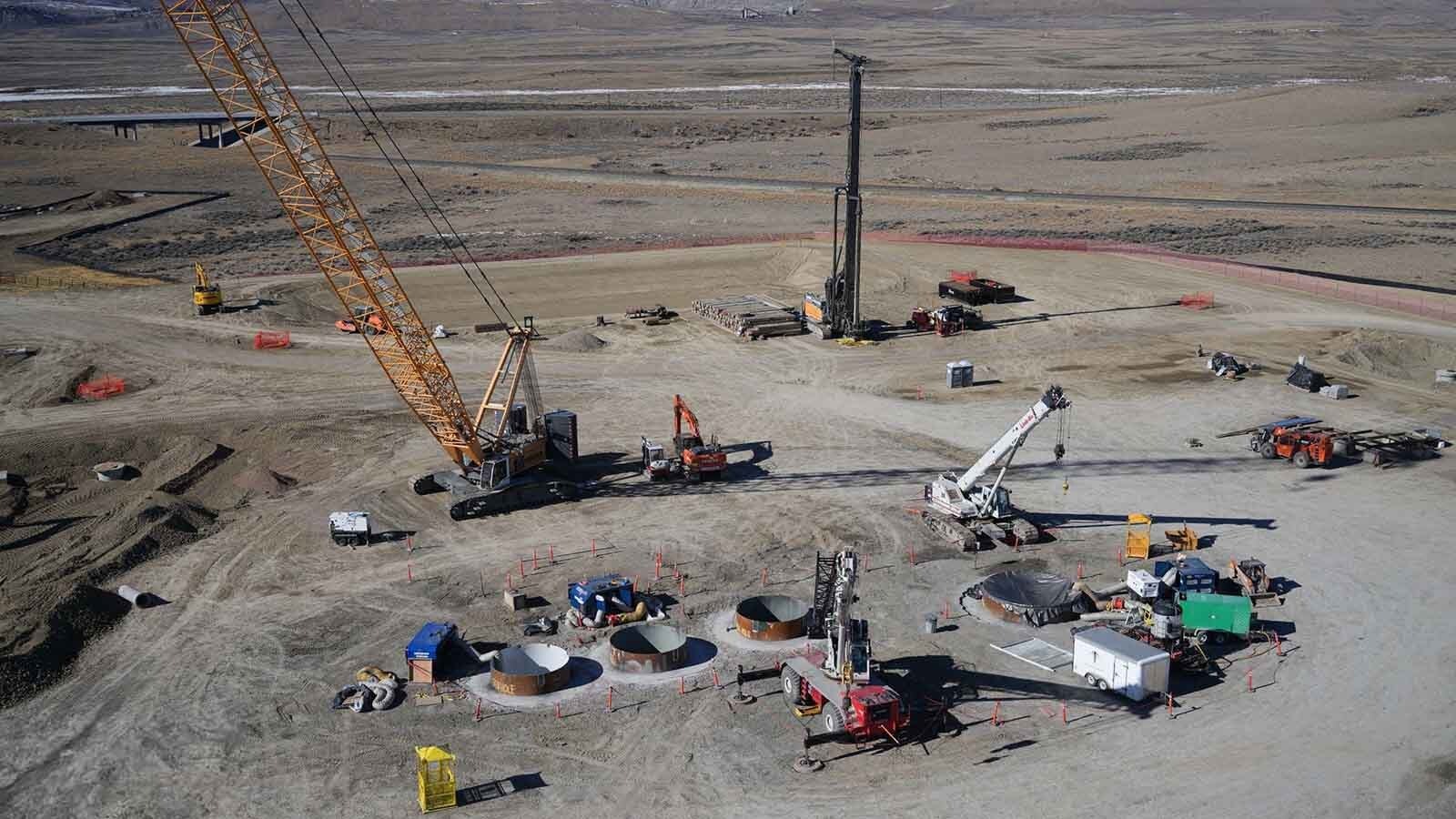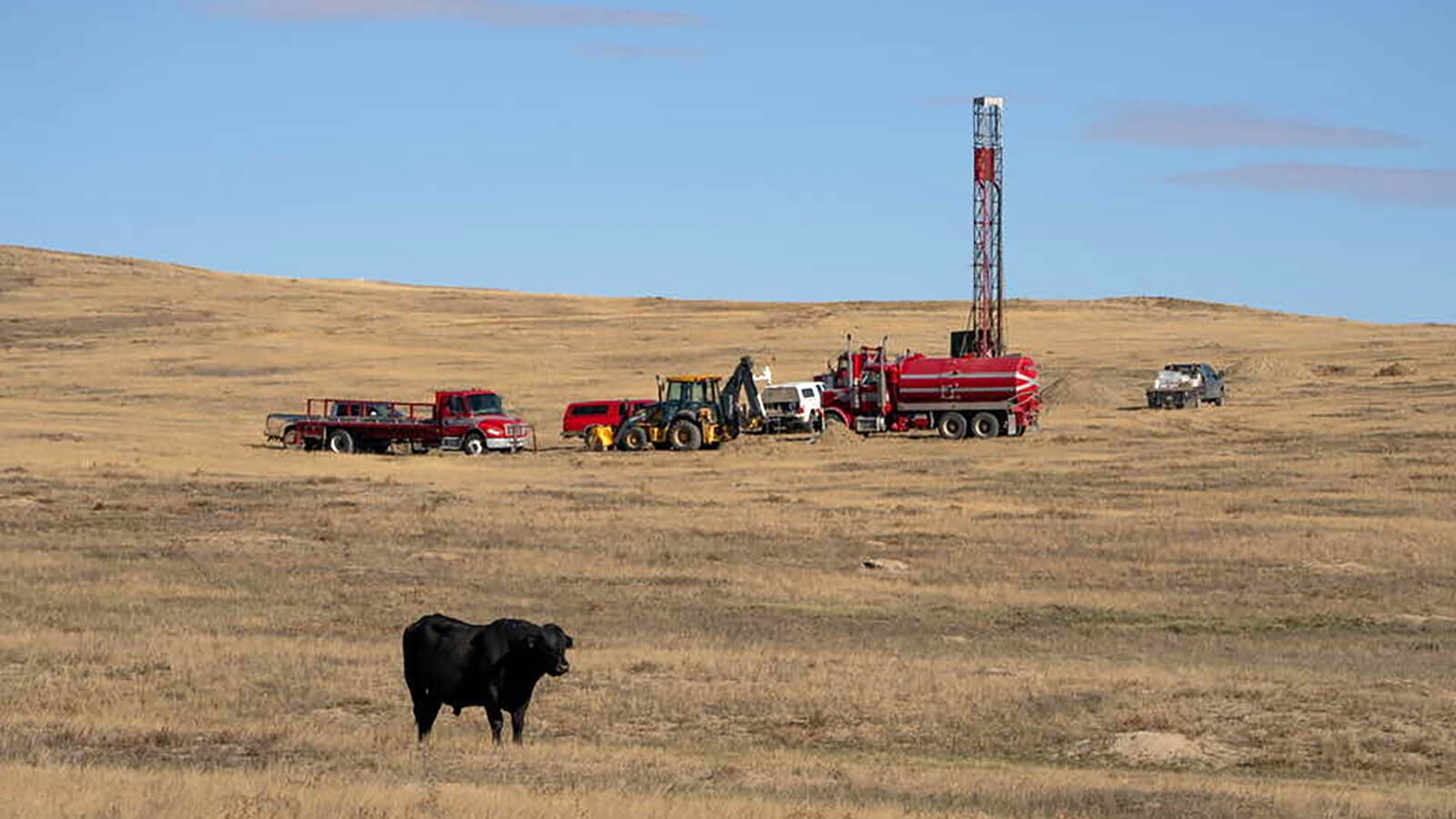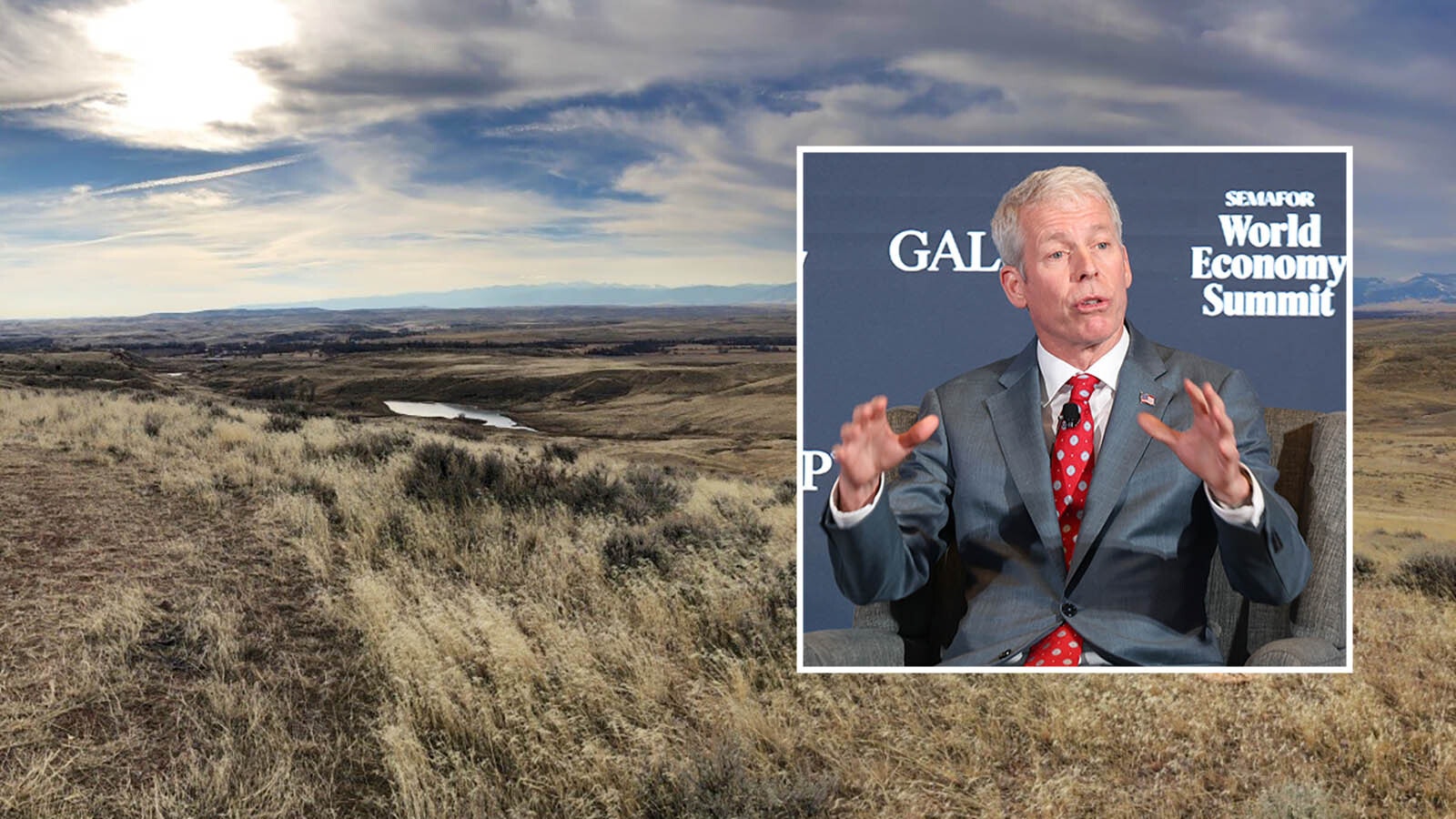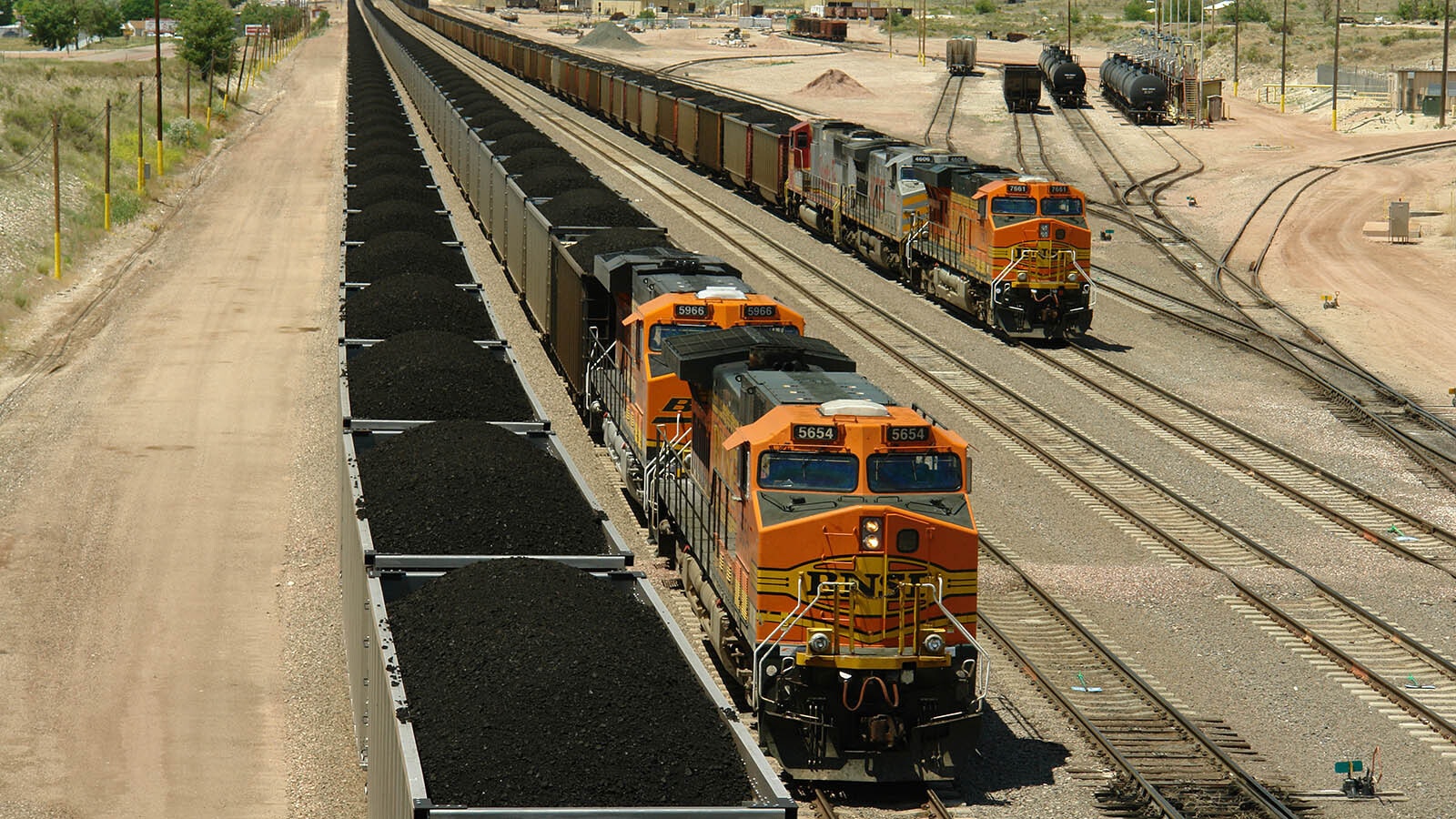Wyoming’s frontrunner status as a coal producer may have been undone by its success.
Just as well-known brands get comfortable with their reputations, and then fall on hard times when they fail to innovate, the same may have happened to the coal-rich Powder River Basin in northeastern Wyoming.
In interviews with Cowboy State Daily, some industry people say Wyoming missed the boat when it didn’t pursue chances to ship coal from the PRB through interstate coal slurry pipelines when the idea first arose nearly 50 years ago.
One Wyoming lawmaker attempted, but failed, to resurrect the concept eight years ago.
“The whole thing was shot down by the price of getting land,” said former state Sen. Michael Von Flatern, a former Republican lawmaker from Wyoming’s coal heartland in Gillette from 2005 to 2021.
About eight years ago, Von Flatern took a serious look at bringing a coal slurry pipeline to the PRB region that could have brought the economic boost it needs today. But the price tag of $20 billion turned everyone off, he said.
Maybe the pipeline idea didn’t have a chance, but had such a pipeline been built, it may have slowed down PRB’s rapid downsizing, the former lawmaker said.
You Snooze, You Lose
In the first three months of 2024, the region experienced a 20% drop in coal production compared to the same period last year.
There’s been buzz on recent conference calls with Wall Street analysts by executives with Peabody Energy Inc. and Arch Resources Inc., both headquartered in St. Louis, Missouri, of possible layoffs. And the Biden administration is pushing new environmental rules that would phase out coal-fired power plants by the early 2040s.
“You need land, water and money because you need a right of way,” said Brian Jeffries, a former executive director of the Wyoming Pipeline Authority before it merged into the Wyoming Energy Authority in 2020.
Jeffries helped with a study of the possibilities of building a coal slurry pipeline for Von Flatern in 2016.
The study died a natural death, Jeffries told Cowboy State Daily.
“You don’t build projects based on speculation. You build projects with contracts in hand,” he said.
Did PRB miss an opportunity, first in 2016, and again back in the late 1970s and early 1980s, to build a coal slurry pipeline?
“Yes,” Von Flatern said.
Slurry pipelines move mixtures of crushed coal and water from where it’s mined to where it is consumed. For very short distances, large trucks are used to transport coal, but trains and barges are preferred for long distances.
For Wyoming, a slurry pipeline could’ve been a game-changer in getting PRB coal to potential ports for access to international markets.
Pipeline History 101
The roots of coal slurry pipelines date back to the 1950s, though it wasn’t until the late 1970s and early 1980s when things began heating up with the concept — particularly in Wyoming.
In 1982, Pipeline magazine labeled Edward Wasp the "patron saint of slurry pipelines" and one of the leading slurry pipeline engineers in the world. He began work on the engineering design for the first Wyoming coal slurry pipeline, which never got built, as early as 1973.
Before Wasp’s Wyoming reputation, he had earned his street credibility throughout the nation with innovative pipeline projects elsewhere, according to historical accounts written by Energy Transportation Systems Inc. (ETSI) and others, like Dan Whipple, a Colorado-based writer who wrote regularly on the ETSI topic nearly 50 years ago for the well-respected High Country News monthly magazine.
“It’s unlikely that there would be much interest in a coal slurry pipeline today because no one has the money to build one,” Whipple told Cowboy State Daily.
“There’s no water to shore up the pipeline today because of water overcommitted from the Colorado River,” he said. “Back in the 1970s, there was a potential of the pipeline happening without the Colorado River being drained.”
Whipple’s account of the ETSI project was recounted in an authoritative 2014 article published by WyoHistory.org, a project of the Wyoming Historical Society.
According to Whipple’s recollections of the early 1980s, Wasp was working with contractors and state officials in America’s Great Plains and Gulf Coast states to construct a coal slurry pipeline extending between Wyoming’s PRB and coastal Gulf states like Arkansas, Louisiana and Texas.
The ETSI project was viewed as a shot in the dark to jump-start coal slurry pipeline projects throughout the nation.
The project began with a consortium of energy companies forming a partnership that would tap water in aquifers, and even take some from the Colorado River.
ETSI wanted access to rights of way from railroads and bury the 30-inch pipeline for over 1,500 miles to terminals located along the Gulf Coast. The 1973 Arab oil embargo caused a boom in the coal industry, and slurry pipelines were proposed as an alternative to railroad transportation.
To get at the water, ETSI wanted to drill wells in northeastern Wyoming in Niobrara County to access underground water resources near the PRB instead of using surface water for the coal slurry, according to an account provided by the University of Wyoming.
Noteworthy today is the fact that there are no coal slurry pipelines in the United States, principally because of clean air advocates who’ve diligently worked to close coal-fired power plants throughout the U.S. and who have successfully led opposition efforts to stop coal from being moved to Western ports for shipment to export markets.
Golden Age
Nonetheless, a handful of coal slurry pipelines were built for a few decades during their so-called Golden Age from the late 1950s to 1980s, pushed mainly because of Wasp’s efforts.
Wasp began modern slurry pipeline development in the early 1950s when he worked for Consolidated Coal Co. and helped with building the world’s first long-distance pipeline that stretched 108 miles from the northwestern edge of the Appalachian coalfields near Cadiz, Ohio, to a power plant near Cleveland.
The Appalachian coalfield is part of a larger geologic basin that extends into West Virginia, eastern Kentucky, southwestern Virginia and parts of Pennsylvania.
West Virginia had always been the king of coal production ever since the Industrial Revolution in the 19th Century.
Just like in Wyoming back in the early 1980s with the ETSI proposal, coal operators in Appalachia faced opposition from railroads who felt threatened by a cheaper way of moving coal when they initially proposed the concept.
In the mid-1980s, utilities and some mine operators lost a battle to the railroads that would have cleared the way for construction of a coal slurry pipeline from West Virginia’s southern coal fields to the Port of Baltimore.
This was the same period when Wyoming took up its battle with the railroads. There were incentives to find a cheaper way to move coal from PRB to coastal ports.
In 1986, Wyoming, with its nonunion workforce and easier to mine coal from open surface pits and high-grade ore, overtook West Virginia with its higher paid union miners and expensive to operate underground mines.
Today, Wyoming digs up about 40% of the nation’s thermal coal used for burning at power plants across the Western and Midwestern states. While coal production is down significantly from its glory days, Wyoming still has an edge over No. 2 producer West Virginia.
Last Coal Slurry Pipeline
After working at Consolidated on the Ohio project in the 1950s, Wasp went on to become a slurry systems manager for Reston, Virginia-based engineering firm Bechtel Corp., where he designed slurry pipelines around the world, including the last one ever built in the U.S, according to accounts provided by Whipple in his 2014 article.
Bechtel is the same engineering firm working on the design of a nuclear demonstration plant in Kemmerer, Wyoming, for the Bill Gates-backed TerraPower LLC, and which is scheduled to have a groundbreaking ceremony June 10.
Wasp also was involved with the last coal slurry pipeline built in the U.S.
This Black Mesa project, a 273-mile, 18-inch pipeline built in 1969 and 1970, stretched from a coal mine in Kayenta, Arizona, to the 1,500-megawatt Mohave power plant near Bullhead City, Arizona.
As a subcontractor, the pipeline project handled up to 5 tons of coal per year in slurry form for Peabody, which was responsible for moving coal from the mine to the power plant.
The pipeline was closed down along with Mohave power plant in 2006.
The closure may have been the final blow for Wasp, who died in 2015, falling victim to an inability to pencil out the economics for bringing such expensive projects to fruition.
The concept for Wasp’s Wyoming project nearly became his crowning achievement.
Von Flatern’s push to resurrect a variant of the project never went anywhere.
In the interview with Cowboy State Daily, Jeffries researched a concept for Von Flatern in 2016, and took a look at some of the public policy debates between Frank Odasz, a lobbyist for ETSI and chief proponent of the coal slurry pipeline, and U.S. Rep. Teno Roncalio, the last Democrat who represented Wyoming in the House of Representatives, and who was opposed to the pipeline project because of water issues.
$20 Billion Pipeline
“It was a long slog over railroads granting rights of way,” Jeffries said. “One of the issues that ultimately killed off the ETSI proposal happened when Arkansas Power and Light signed a contract with the railroad that took away a presumed anchor tenant, because you can’t build these projects unless you have customers.”
Von Flatern was intrigued by bringing back the ETSI concept, said Jeffries who formerly worked in the engineering department with one of the equity partners in the ETSI project.
“He wanted to know more about the project, like how much water would it take, the diameter of the pipeline and how much it might cost,” he said.
Von Flatern said that he was interested in a west coast terminal for a coal slurry pipeline that would run from PRB to ports in Longview, Washington, and San Diego, California, according to Jeffries.
“He wanted a pipeline (60 inches in diameter) that could move more than ETSI’s proposed 37.5 million tons a year, about double that with 75 million tons,” he said.
Van Flatern told Cowboy State Daily that he wanted to look at the economics of transporting coal slurry to San Diego, then move the coal via pipeline, cargo ship or railroad to the Manzanillo Port along the western-central coastline of Mexico. Van Flatern wanted to ship PRB coal to overseas markets in South Korea and Japan.
In his study, Jeffries came up with an estimated cost of $20 billion to build the pipeline to San Diego, and “maybe a little less to Longview.”
“It was a big, big number,” he said. “If you’re going to do a project, one of the things you’ve got to really be willing to stomach is a lot of upfront costs in order to convince a customer who you know will be around to pay its bills for years, and sign up to pay the pipeline off.”
The cost of building a coal slurry pipeline today is unlikely, Jeffries said. “Who’s got the checkbook to do this, and take the risk."
The final chapter on the coal slurry pipeline concept may have been written.
“The coal industry definitely missed the boat,” said Von Flatern, who suffers from Parkinson’s disease.
The pipeline could have moved roughly 40 million tons of the pulverized coal in water in 2016 under the proposal presented to Von Flatern by Jeffries.
In today’s world, the 40 million tons probably would not put a dent in reversing the dramatic decline in the industry, according to Von Flatern.
PRB coal production peaked in 2008 at 446 million tons, and currently stands at about 230 million tons as of last year, according to data provided by the federal government’s Mine Safety and Health Administration.
Von Flatern sees coal’s fortunes in PRB continuing to decline.
“In a few years, I see it falling to 100 million tons forever,” especially given the long-term needs of some industrial buyers in the U.S. as a stable base of customers, he said.
“I thought we had a good chance to turn things around for PRB," Von Flatern said. “I think there will be a downturn yet to come.”
Pat Maio can be reached at pat@cowboystatedaily.com.





